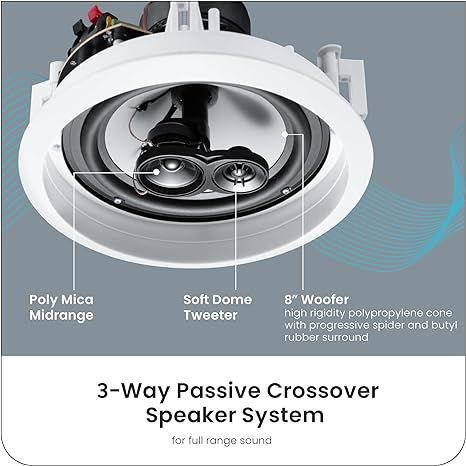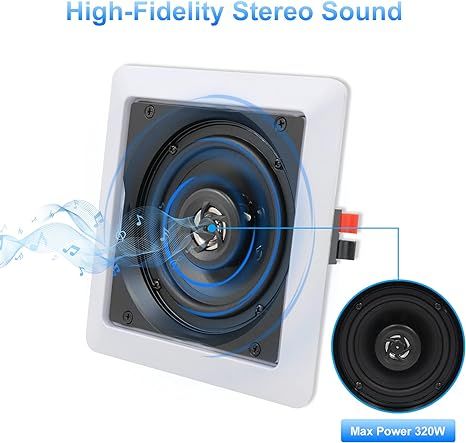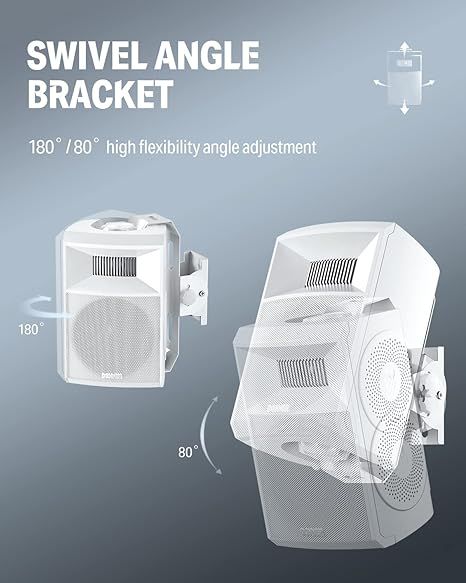Understanding 4-Ohm and 8-Ohm Speakers for Optimal Audio Experience
-
- Understanding Impedance in Audio Equipment
- Matching for Best Results
- Sound Quality Factors
- Key Differences Between 4-Ohm and 8-Ohm Speakers
- Matching Speakers with Amplifiers: What to Consider
- Impedance Compatibility
- Power Handling
-
- Real-World Performance: Does Impedance Affect Sound Quality?
- Amplifier Compatibility
- Sound Characteristics
- Wiring Configurations for 4-Ohm and 8-Ohm Speakers
-
- Choosing the Right Speaker Impedance for Your Setup
- Match Your Amplifier's Specifications
- Consider System Configuration
- Q&A:
- What is the difference between 4-ohm and 8-ohm speakers?
- Can I use a 4-ohm speaker with an 8-ohm amplifier?
- Which type of speaker is better for a home theater system, 4-ohm or 8-ohm?
- How does impedance affect sound quality?
- Reviews

If you're aiming for superior audio performance, opt for 4-ohm drivers. They deliver more power, allowing your amplifier to push out greater output without straining. This results in a more dynamic and impactful listening experience, perfect for those who crave rich bass and clear highs.
On the other hand, 8-ohm models are a great choice for compatibility with a wider range of amplifiers, ensuring longevity and reliability in various setups. They tend to produce cleaner sound at lower volumes, making them ideal for casual listening environments.
Consider the type of amplifier you have: match the impedance to ensure the best synergy. Systems built for high output work best with lower impedance loads, while higher impedance options may suit those looking for versatility and flexibility in their audio arrangements.
Understanding Impedance in Audio Equipment
Choose speakers with a resistance rating that matches your amplifier for optimal performance. For high-efficiency speakers, consider those with lower resistance values to maximize power output.
Matching for Best Results
When pairing audio components, ensure that the output specifications of your amplifier align with the characteristics of your loudspeakers. Mismatching can lead to subpar sound quality and potential damage to your equipment. A receiver rated for specific resistances will operate most efficiently when matched correctly.
Sound Quality Factors
Higher resistance options often produce a cleaner sound at lower volumes, making them suitable for home listening scenarios. Conversely, lower resistance can deliver increased power at higher volumes, which is beneficial for larger spaces or public events. Consider the environment and typical usage when making a selection.
Lastly, keep in mind that wire thickness also impacts performance. Thicker wires reduce resistance and can improve signal quality, particularly for longer runs. Verify that all components in your audio setup are compatible and optimized for the best listening experience.
Key Differences Between 4-Ohm and 8-Ohm Speakers
For optimal performance, select a speaker with a compatible impedance level for your audio setup. Devices designed for low-resistance models (4 Ohm) typically deliver higher power output, making them suitable for generating more volume from an amplifier. In contrast, higher-resistance options (8 Ohm) tend to draw less power. This can be advantageous for ensuring longevity and preventing overheating in your audio components.
Consider the amplifier's specifications when choosing between these two types. Many amplifiers can easily handle 8 Ohm loads, while some may struggle with lower resistance. The choice influences the overall sound quality and system efficiency. Evaluate the intended use; low impedance designs are often favored in live sound setups for greater dynamics, while high impedance types suit home audio systems for clarity and balance.
In terms of wiring, low-resistance speakers usually require parallel connections, whereas high-resistance models can be wired in series without any issues. This difference affects installation and overall system configuration. Remember to match the speaker type with your receiver or amplifier for the best audio experience.
Matching Speakers with Amplifiers: What to Consider
Choose an amplifier that corresponds to the rated power of your audio devices. For example, if your speakers handle 100 watts, select an amplifier that can deliver a similar power output without exceeding this limit to avoid distortion or damage.
Impedance Compatibility
Ensure the amplifier's output impedance fits the rated impedance of your audio output devices. Mismatched impedances can lead to reduced performance. A lower impedance can draw more power from the amplifier, potentially causing overheating and failure.
Power Handling

Check the RMS (Root Mean Square) power specifications. This figure provides a realistic measure of how much power the speakers can handle continuously. Matching the amplifier’s RMS ratings with the speaker’s capabilities increases audio quality while preventing overloads.
If utilizing a multi-channel setup, ensure each amplifier channel can handle the connected audio devices appropriately without compromising sound quality.
Lastly, consider the audio source you will use. High-quality sources will provide better outputs, enhancing the overall performance of your listening experience.
Real-World Performance: Does Impedance Affect Sound Quality?
The choice between different resistance ratings can significantly influence audio fidelity. A lower resistance typically allows for higher power delivery from an amplifier, enhancing dynamic range and overall loudness. In practical terms, this means if you're running high-power systems, opting for speakers with lower resistance will yield louder and more impactful sound.
Amplifier Compatibility
Matching the output of your amplifier with the requirements of your sound-producing units is critical. An amplifier designed for lower resistance should not be used with high-resistance units as it may struggle, leading to distortion at higher volumes. Always consult the specs of your amplification device to ensure optimal pairing.
Sound Characteristics
The way different resistance levels affect sound traits also varies. Lower resistance setups often produce a richer bass response while maintaining clarity in mid and high frequencies. Conversely, high-resistance models may deliver a more detailed soundstage but at the risk of lower overall power. Consider your listening preferences and the type of music played when selecting the optimal configuration for your needs.
Wiring Configurations for 4-Ohm and 8-Ohm Speakers

For connecting audio drivers with a resistance of 4 ohms and 8 ohms, you can use two primary configurations: series and parallel. Choose the configuration based on your desired total resistance and power draw.
| Configuration | Description | Total Resistance |
|---|---|---|
| Series | Connect drivers end-to-end. Positive of the first connects to the negative of the second. | 4 Ohm + 4 Ohm = 8 Ohm 8 Ohm + 8 Ohm = 16 Ohm |
| Parallel | Connect positive terminals together and negative terminals together for each driver. | 4 Ohm || 4 Ohm = 2 Ohm 8 Ohm || 8 Ohm = 4 Ohm |
For multiple drivers, maintain consistent values in configurations. Mixing different ohm-rated units in a single setup can lead to power imbalances or damage to your receiver.
When wiring multiple 4-ohm drivers in series for a higher resistance, ensure your amplifier can handle the cumulative load. Conversely, parallel connections can enhance power delivery, but make sure the amp supports low ohm ratings.
Prioritize quality speaker wire and secure connections to minimize resistance loss and maximize performance. Regularly inspect all joints and connections for reliability.
Choosing the Right Speaker Impedance for Your Setup
Select a resistance level that aligns with the specifications of your audio amplifier. For amplifiers designed for lower resistance, such as 4 ohms, pairing them with similar units allows for maximum power delivery and sound efficiency. Alternatively, systems set for higher resistance, like 8 ohms, work best with compatible speakers to ensure optimal performance and minimize distortion.
Match Your Amplifier's Specifications
- Check the manual or the rear panel of your amplifier for compatible resistance ratings.
- Determine your preferred listening level and typical volume usage.
- If your amplifier specifies support for both resistance types, choose according to your speaker format.
Consider System Configuration
- For multiple audio units, ensure the total resistance matches your amplifier's output. Parallel connections decrease resistance, while series connections increase it.
- Identify your preferred playback environment. Larger rooms may benefit from lower resistance units to fill the space more effectively.
- Evaluate how your receiver performs with different configurations, taking note of any overheating or distortion signals during playback.
By systematically evaluating these factors, you can ensure a harmonious synergy between audio components, resulting in an enhanced listening experience tailored to your preferences.
Q&A:
What is the difference between 4-ohm and 8-ohm speakers?
The main difference between 4-ohm and 8-ohm speakers is their impedance level, which affects how much power the speaker draws from the amplifier. A 4-ohm speaker has lower impedance, allowing it to draw more power from the amplifier and typically produce louder sound. In contrast, an 8-ohm speaker requires more voltage to achieve the same volume, making it more suitable for some setups where a high output is not as critical.
Can I use a 4-ohm speaker with an 8-ohm amplifier?
Yes, you can use a 4-ohm speaker with an 8-ohm amplifier; however, it's important to note that the amplifier might not be able to deliver its full power to the speaker. This mismatch could lead to distortion or damage if the volume is pushed too high. It's generally safer to ensure that your amplifier matches the impedance of your speakers for optimal performance.
Which type of speaker is better for a home theater system, 4-ohm or 8-ohm?
Choosing between 4-ohm and 8-ohm speakers for a home theater system largely depends on your amplifier and personal preference. If your amplifier is capable of driving 4-ohm speakers, they can produce higher sound levels. However, 8-ohm speakers are often preferred for home setups because they are compatible with a wider range of amplifiers, typically resulting in better sound quality and longevity. Make sure to check your amplifier's specifications before deciding.
How does impedance affect sound quality?
Impedance itself does not directly affect sound quality, but it does influence how efficiently a speaker works with an amplifier. Lower impedance (like 4 ohms) can allow for higher power handling and louder sound, which some audiophiles may perceive as better quality in terms of volume. Conversely, 8-ohm speakers are considered more stable and may deliver clearer sound when paired with compatible amplifiers. In the end, sound quality also depends on other factors like speaker design, materials, and the audio source.
Reviews
Emma
I recently read "Impedance Explained: 4-Ohm vs. 8-Ohm Speakers," and it was quite informative. The book's clear explanations helped me understand the differences between 4-ohm and 8-ohm speakers, which was something I always found confusing. The author breaks down technical terms in a way that feels approachable for someone who might not have a deep audio background. I appreciated the practical examples and comparisons throughout the chapters. This made it easier for me to see how impedance affects sound quality and speaker compatibility with amplifiers. The visuals were also a nice touch, supporting the text and enhancing my understanding. Since reading it, I feel more confident about making informed decisions regarding audio equipment. If you're looking to grasp speaker impedance and want straightforward, no-nonsense information, this book is a great choice. It's a solid resource for beginners to get acquainted with audio gear without feeling overwhelmed. Highly recommended!
ThunderWolf
I recently picked up "Impedance Explained: 4-Ohm vs. 8-Ohm Speakers," and I have to say, it was a solid read. The book breaks down the differences between 4-ohm and 8-ohm speakers in a way that's easy to understand, even for someone who isn't an audio expert. It covers the technical aspects without overwhelming you with jargon. I appreciated the diagrams and comparisons that illustrated how impedance affects sound quality and amplifier compatibility. The author provides real-world examples that helped clarify when to choose one type over the other. I also liked the section on how to match your speakers with your amp, which can be tricky for beginners. Overall, it's a great resource for anyone looking to improve their audio setup or just gain a bit of knowledge in speaker technology. Highly recommend it to fellow audio enthusiasts!
Logan
I recently purchased "Impedance Explained: 4-Ohm vs. 8-Ohm Speakers," and it has been incredibly informative. The content breaks down the differences between the two types of speakers clearly, making it easy for someone like me to understand the implications for my audio setup. I appreciated how it covered not just the technical aspects but also practical advice on matching speakers with amplifiers. This helped me choose the right combination for my system without feeling overwhelmed. The explanations were straightforward, and I found the examples relevant and helpful. One thing I found particularly useful was the section on how impedance affects sound quality and power handling. It made me more confident in my decisions while shopping for new equipment. Overall, this material is a valuable resource for anyone looking to gain a better understanding of speaker impedance. I highly recommend it to both beginners and those with some audio experience.
James Williams
I recently bought "Impedance Explained: 4-Ohm vs. 8-Ohm Speakers" and found it incredibly enlightening. As someone who has always been curious about audio specs but was never quite sure how they impacted sound quality, this product really clarified many concepts for me. The explanation of how impedance affects speaker performance and amplifier compatibility was straightforward and easy to grasp. I appreciated the comparisons between 4-ohm and 8-ohm speakers, which helped me understand their differences in a practical way. The visuals included were also a big plus; they made complex ideas easier to visualize. Since reading this, I feel more confident making informed decisions about my audio setup. I now know what to look for when shopping for speakers or upgrading my system. I highly recommend this to anyone interested in improving their sound experience or just wanting to understand the basics of speaker impedance better. It's definitely worth the read!
Cherry
I recently purchased "Impedance Explained: 4-Ohm vs. 8-Ohm Speakers," and I'm really pleased. The book is clear and informative, making complex topics accessible. As someone who loves music but isn't an expert in audio equipment, I found the comparisons between 4-ohm and 8-ohm speakers particularly helpful. The explanations are straightforward, and the diagrams really aid in understanding. I appreciated how the author broke down the technical aspects without overwhelming the reader. It also includes practical advice on choosing the right speakers for different setups, which I found useful for my home audio system. The layout is tidy, making it easy to reference specific sections. I absolutely recommend this book for anyone looking to improve their audio knowledge or considering a speaker purchase. It's a great resource that has definitely enhanced my understanding!







